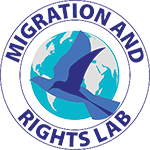Child Migration and Streetism in Ghana

Ghana and South Africa’s Visa-Free Travel Agreement
October 19, 2023Introduction
Ghana’s landscape of internal migration comprises a considerable number of both adults and children. Analysis from the 2000 and 2010 censuses reveals a higher proportion of interregional migration compared to intraregional migration, indicating a prevalence of long-distance movements within the country. Data from the Ghana Statistical Service (GSS) in 2016 further highlights the predominance of internal migrants in urban areas, with females outnumbering males the proportion of internal migrants in urban areas (50.9%) exceeded those in rural areas (43.3%); in addition, there were more female (3,742,626) than male (2,745,438) internal migrants. This trend persists, as evidenced in the 2021 population and housing census, with Greater Accra, Ashanti, Western, and Brong Ahafo regions hosting the highest volumes of internal migrants, while regions like Eastern, Volta, and Ashanti witness significant out-migration.
Demographic Trends in Ghana
With a population of 30.8 million and a slight majority of females (50.7% females compared to males at 49.3%), Ghana’s demographic landscape showcases a shift from a predominantly child population to a prevalence of youth, particularly in urban areas. This transition is mirrored across all regions, with Greater Accra exhibiting the most pronounced shift. A notable demographic shift is observed from a predominance of children aged 0-14, particularly in rural areas where they constitute 39.5% of the population (4,657,544), to a prevalence of youth aged 15-35, particularly in urban areas where they account for 60.5% (7,125,070). This transition is marked by a decline in the proportion of children from 41.3% in 2000 to 35.3% in 2021, while the proportion of young people increased from 34.6% in 2000 to 38.2% in 2021, a trend evident across all regions, with Greater Accra showing the most pronounced shift.
Migration Patterns And The Situation Of Street-Connected Children And Families
Globally, an increasing number of children embark on migration journeys, driven by diverse motivations. In Ghana, street-connected children face severe hardships, including poverty, violence, and limited access to essential services. Despite challenges in accurately estimating their prevalence, street-connected children are predominantly concentrated in major urban centres, with numbers steadily rising. Given their marginalized status, street children constitute a hidden demographic, with limited studies available to accurately estimate their prevalence in Ghana or provide disaggregated data by region. In a 2019 report featured on Ghana Web, Benabi’s estimations suggest a staggering figure of 30 million street children across Africa, with over 90,000 of them dwelling on the streets of Ghana.
Hotspots of street-connected children in major urban centers in Ghana
| Region | hotspot |
| Accra | Kasoa |
| Tudu | |
| Circle | |
| Lapaz | |
| Madina | |
| Kumasi | Aboabo (station) |
| Asafo (market area) | |
| Kejetia | |
| Adum areas | |
| Tamale | Central market, Dungu Dungu UDS, Nyankpala UDS Kaladan park |
| Takoradi | Sekondi Beach New Takoradi Takoradi Market circle Nkontompo |
| Techiman | Main market, Kumasi,Wa and Tamale Stations |
Welfare of Street-Connected Children and Their Families
Poor mental health is prevalent among street-connected children in Ghana, as revealed by a study involving 207 children aged 12 to 18 in Accra, Sekondi Takoradi, and Kumasi. Approximately 73% of these children experience moderate to severe mental health issues, with 90% reporting a poor quality of life. These findings emphasize the urgent need for targeted interventions and support systems to address the mental health challenges faced by this vulnerable population.
Social deprivation contributes to delinquent behaviours among street-connected youth, with males often joining gangs and engaging in drug abuse and robbery. Conversely, females are at heightened risk of exploitation, resorting to prostitution or becoming victims of rape. The lack of adequate protection and support further exposes street-connected children to diseases, worsening their vulnerabilities.
Street-connected children are highly susceptible to forced labor, human trafficking, and smuggling, as they are easily lured by false promises of assistance. This exploitation can take various forms, including forced labor in domestic settings and commercial sexual exploitation. The absence of proper guardianship and support networks increases the likelihood of street children falling prey to traffickers and smugglers, highlighting the need for comprehensive measures to safeguard their rights and well-being.
Children with disabilities face significant challenges and discrimination, constituting one of the most marginalized groups in society. Negative attitudes and inadequate policies hinder their access to fundamental rights such as healthcare and education, exacerbating their vulnerability to poverty and exclusion. Despite efforts, children with disabilities continue to be disproportionately affected, highlighting the urgent need for inclusive policies and support mechanisms.
Interventions
Preventive measures targeting root causes like poverty and family breakdown are crucial in combating streetism. Addressing socioeconomic disparities and strengthening family units can prevent children from becoming vulnerable to street life.
A multisectoral approach involving collaboration among NGOs, government agencies, and local communities is necessary to address the complex challenges of streetism. By pooling resources and expertise, stakeholders can develop comprehensive policies and services spanning the education, social welfare, and healthcare sectors.
Access to formal education and vocational training is vital in breaking the cycle of streetism and social exclusion among street-connected children. Prioritizing education equips them with the skills needed for reintegration into society and pursuing meaningful opportunities.
Family reunification efforts are essential for meeting the needs of street children. Targeted interventions, including family counselling and economic assistance, strengthen familial bonds and provide stability and protection for street children.
Advocacy for the rights of street children is crucial for their well-being and inclusion in society. Prioritizing policies and programs that protect their rights, particularly in education, healthcare, and family reunification, can create a more equitable environment for street-connected children.
Drop-in centres offering counseling, education, and life skills training are vital for street-connected children. These centres provide a supportive environment for children to reflect on their situation and explore new opportunities for their future.


